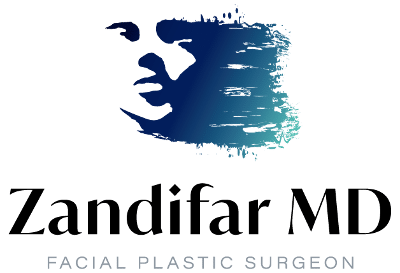When it comes to recovering from facial cosmetic procedures, one crucial yet often overlooked factor can make or break your results: sun exposure. Whether you’ve had a facelift, rhinoplasty, laser treatment, or even injectables, the sun’s UV rays can significantly interfere with healing and long-term skin appearance. At ZandifarMD.com, we prioritize patient education and recovery strategies to ensure you get the best outcome possible from your procedure.
Understanding how sunlight affects surgical healing and skin quality is the first step in protecting your investment and your health.
Why Sun Exposure Matters After Facial Surgery
The Role of UV Radiation in Healing
Ultraviolet (UV) rays from the sun penetrate deep into the skin, triggering oxidative stress, inflammation, and pigment production. After facial surgery or resurfacing procedures, the skin is in a vulnerable, healing state—often thinner, more inflamed, and more susceptible to damage. During this phase, even minimal sun exposure can interfere with tissue regeneration and scar remodeling.
Compromised Skin Barrier Function
Healing skin, especially after resurfacing treatments like laser or chemical peels, has a compromised barrier function. This means it’s less capable of filtering harmful environmental elements—including UVA and UVB rays. Without proper protection, the skin can react with prolonged redness, irritation, or delayed healing.
Post-Surgical Risks Amplified by the Sun
Hyperpigmentation and Dark Spots
One of the most common complications from sun exposure during the healing phase is post-inflammatory hyperpigmentation (PIH). This condition occurs when UV exposure stimulates excess melanin production in healing tissues, especially in patients with medium to dark skin tones. What might have been a faint incision line can become a dark, persistent mark.
Worsened Scarring
UV radiation can interfere with collagen synthesis, a process critical to proper wound healing and minimal scarring. Prolonged or repeated sun exposure can lead to hypertrophic (raised) scars or widened incision lines that are more visible and difficult to treat later.
Skin Redness and Inflammation
Sunlight exacerbates inflammation, and when skin is already recovering from trauma or resurfacing, this can prolong redness—especially in patients recovering from procedures like CO2 laser treatments or microneedling. In extreme cases, it may even lead to permanent skin sensitivity.
Timing: When Is It Safe to Return to the Sun?
The First Two Weeks Are Crucial
During the first 7–14 days post-procedure, your skin is undergoing acute healing. This is the time when your body is rebuilding skin structure and creating new collagen. Exposure to sunlight during this stage can lead to permanent textural or pigment changes.
The 3-Month Healing Window
While the outer layers of skin may appear healed after 2–3 weeks, internal remodeling continues for months. Patients who have undergone rhinoplasty, facelift, or resurfacing should minimize sun exposure for at least 3 months after surgery, ideally longer, especially in sunny climates like Southern California.
Preventing Sun Damage During Recovery
Wear Broad-Spectrum Sunscreen Daily
Even if you’re only walking to your car or sitting near a window, broad-spectrum SPF 30 or higher should be applied every morning. Reapply every two hours if you’re outdoors or sweating. Choose a physical (mineral) sunscreen containing zinc oxide or titanium dioxide, which is gentler on healing skin.
Use Wide-Brimmed Hats and Sunglasses
Physical barriers are often more reliable than sunscreen alone. A wide-brimmed hat and UV-blocking sunglasses protect surgical areas like the forehead, cheeks, and eyelids from direct sunlight.
Plan Outdoor Activities Strategically
If you must be outside, do so before 10 a.m. or after 4 p.m. when the UV index is lower. Even then, limit time outdoors and seek shaded areas whenever possible.
Sun Exposure and Long-Term Skin Results
Sunlight Reverses the Benefits of Your Procedure
Facial surgeries and skin treatments aim to rejuvenate and restore a more youthful appearance. However, chronic sun exposure accelerates aging by breaking down collagen, increasing pigmentation, and thickening the outermost skin layers. Without sun protection, results from procedures like facelift or laser resurfacing can be short-lived.
Skin Cancer Risks Increase with Surgical Sites
Healing skin may have altered immune surveillance. Studies suggest surgical scars and resurfaced areas may be more prone to DNA damage from UV exposure, which can, over time, increase the risk of precancerous lesions. This is particularly important for patients with a history of sun damage or skin cancer.
A Tailored Healing Plan with Sun Safety in Mind
At ZandifarMD.com, Dr. Hootan Zandifar—a double board-certified facial plastic surgeon—works closely with patients to ensure their recovery plans are both medically sound and personalized. He educates each patient on the importance of UV avoidance, provides post-op care instructions, and recommends medical-grade skincare to protect and nourish the skin during the healing process.
Every procedure is different. A resurfacing laser requires different sun precautions than a deep-plane facelift. That’s why individualized guidance is key.
Conclusion: Protect Your Investment, Protect Your Skin
Cosmetic surgery is more than just a procedure—it’s a commitment to self-care and confidence. However, neglecting sun protection during recovery can undermine your results and even lead to permanent complications. The impact of sun exposure on surgical healing isn’t just cosmetic—it’s medical.
If you’re considering a facial cosmetic procedure or are currently recovering, don’t leave your outcome up to chance. Work with a specialist who prioritizes long-term skin health and beautiful results.
Ready to take the next step toward rejuvenation and healing the right way?
Schedule your personalized consultation with Dr. Hootan Zandifar today at ZandifarMD.com and learn how to protect your skin before, during, and after your procedure.

